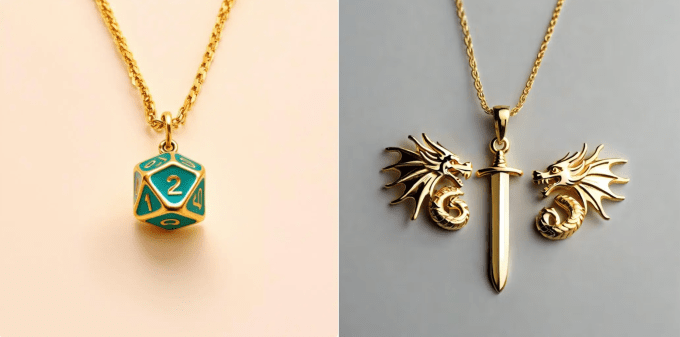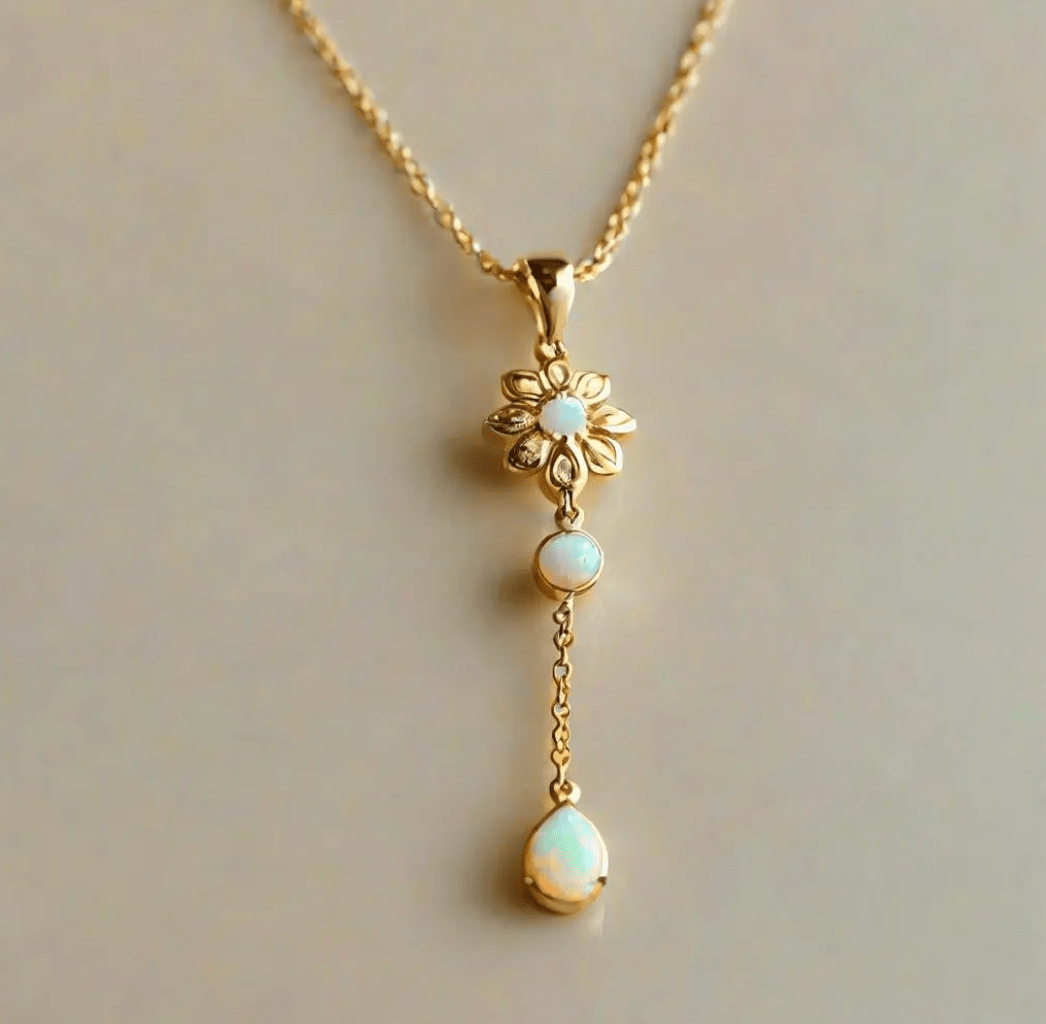Mariam Naficy, the founder of cosmetics retailer Eve and design marketplace Minted, has a long history of supporting independent artists and helping them sell their products. Her latest venture, Arcade AI, is a new type of marketplace that puts creative control directly into the hands of users.
The generative AI platform, which launched its beta in September, allows customers– referred to as “Dreamers”– to input their ideas into a generator that then produces a variety of jewelry design options. They can also upload images.
Once a “Dream” is selected, it’s assigned to one of Arcade’s artisans, who brings the digital concepts to life as tangible pieces of jewelry, including bracelets, charms, earrings, necklaces, rings, and more. There are a number of materials to choose from, including gold, brass, silver, and a variety of gemstones, including diamonds, garnet, ruby, and more.
I tested the new generator myself, which leverages a mix of third-party models, such as Stable Diffusion and Midjourney. After entering my personal preferences, particularly my love for opals, the AI tool generated a delicate, gold floral necklace for me (featured in the image above).
I then placed the order with Studio Maisette, one of the design studios on the platform, and a few days later, I received a video of the finished product for approval. The entire process, from order placement to product delivery, took around two weeks.
While the necklace might seem basic at first glance, I think it perfectly captures my aesthetic. Bonus points for the trio of opals, which are of good quality, according to my gemologist friend.
Not all the results generated were up to standard, however, and I ran into some hurdles along the way. For example, the AI generator had a hard time adding multiple charms to one necklace. It also failed to create complex objects like a twenty-sided die.
 Image Credits:Arcade AI/Lauren Forristal
Image Credits:Arcade AI/Lauren Forristal
“To make sure that everything is manufacturable, we actually have to constrain the models a little bit to what the makers are giving us in terms of data or what they can make,” Naficy told me.
Fortunately, there’s an editing tool where you can add, erase, or adjust certain elements to truly bring your vision to life. Still, it didn’t always turn out as I envisioned.
Naficy plans to improve the “magic editor,” adding things like Image Prompt (IP) Adapters, which are small models that allow pre-trained text-to-image diffusion models to create images based on image prompts. Another idea in the works is to let users be able to choose a part of the image to modify. Or drag a part of the image and move it elsewhere.
Designing custom jewelry on Arcade can be quite expensive, potentially costing $1,000 or more, depending on the complexity of the design. However, if you prefer a simpler piece, you can expect to spend around $100. Shipping ranges from $10 to $30. This is in line with what custom-designed jewelry usually costs.
For reference, the piece I designed was priced at $186 plus $10 in shipping.
The cost depends on the material used, the size of the object, and other factors like the length of a necklace chain or any additional requests you want to add in the comments section to the manufacturer. Makers set their prices and have to accept the design and agree with the price before agreeing to make it. They can also reject a design if they think it’s too complicated to make.
Even if users can’t afford to purchase their creations on the website, Naficy said they can simply enjoy the process of creating and adding their designs to the collection of “Dream Boards” featured on their profile.
“We just want this to be magical and fun, and we’re just going to keep working on these experiences until it’s more magical and very fun. But there is this part of me that just wants people to be able to create for fun and share their creations with other people. They don’t actually have to only buy to experience the site,” she said.
Notably, “Dreamers” can profit from their designs, earning a 2.5% commission on sales. To become a seller, users must have 100 followers and have either sold three items or sold $500 worth of products. In the coming weeks, they’ll be able to set their own price point.
 Image Credits:Arcade AI/Lauren Forristal
Image Credits:Arcade AI/Lauren Forristal
Using an AI generator to allow customers to take control of design could be controversial among jewelry designers for several reasons. Designers may worry that their unique creations could be replicated or used without permission, which could infringe on their intellectual property rights. Additionally, some might fear that automating the design process could result in fewer opportunities for human designers, jeopardizing their livelihoods.
However, Naficy claims the artisans featured on Arcade feel differently.
“They were very receptive. I was not expecting that…They saw it as a way to increase business, you know, like, ‘This is great because now I can talk to consumers and understand what they want.’”
And, according to Naficy, the AI model is trained never to copy a design exactly as it is shown in the uploaded image.
“We can block certain words from being used in the prompt layer. Also, in our image functionality, we can dial up how strongly the AI is allowed to deviate from the source image,” she explained.
“I spent 15 years running Minted, where people would copy our artists all the time, and I could see the pain that it caused people. I was very artist-empathetic because we were constantly issuing takedown notices for them on our site and trying to protect the artists and the art. So what we’re doing, I think gives us actually more control than most marketplaces,” Naficy added.
 Image Credits:Elisabeth Fall
Image Credits:Elisabeth Fall
Arcade is considering expanding to other categories in the future, possibly adding accessories, apparel, leather goods, and more. This would have Arcade directly competing with Off/Script, another product creation platform that emerged last year to help artists fund their AI-designed items, spanning from clothing and accessories to home decor and furniture.
In terms of features, Naficy wants to add more social features in the coming months. This includes the ability for sellers to thank users who buy their designs and options for community members to chat with each other. Arcade may also launch competitions where winners can earn free jewelry if their design gets the most votes.
Another long-term goal is to partner with major brands, allowing users to purchase products from well-known retailers directly through the platform.
Arcade has received $17 million in total funding from Ashton Kutcher (Sound Ventures), Offline Ventures, and Reid Hoffman (LinkedIn co-founder). Other notable investors include Colin Kaepernick, Lumi founder and former NFL quarterback; David Luan, CEO of Adept AI Labs and former vice president of engineering at OpenAI; and supermodel and entrepreneur Karlie Kloss, among others.
